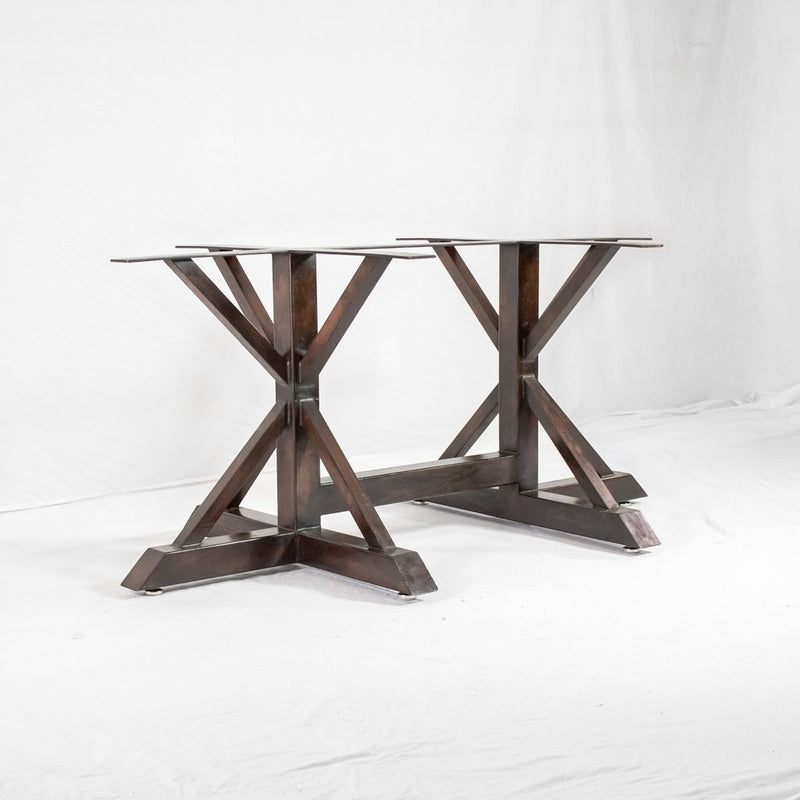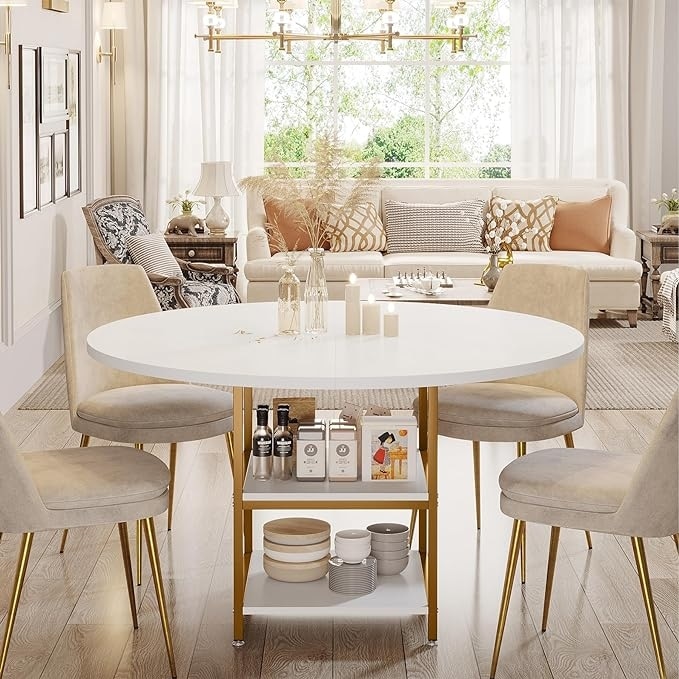Why Dining Room Table Legs Are Crucial for Your Table’s Stability
Why Dining Room Table Legs Are Crucial for Your Table’s Stability
Blog Article
From Typical to Modern: Locate the Ideal Dining-room Table Legs for Your Design
The selection of eating room table legs plays a crucial role in defining the total character of your space, connecting the gap between conventional workmanship and contemporary looks. While traditional styles such as cabriole and turned legs stimulate a sense of classic elegance, modern designs like barrette and geometric options offer an opportunity for striking visual interest. Evaluating the right balance between these styles calls for a nuanced understanding of your existing decoration and individual preference. As you take into consideration these elements, the question continues to be: how can you flawlessly integrate these diverse leg styles to create an unified dining experience?
Comprehending Table Leg Styles
The selection of dining-room table leg styles can dramatically affect both the aesthetic appeals and functionality of the room. Each leg design contributes one-of-a-kind aesthetic aspects and useful attributes, dealing with diverse style preferences and usage demands. Comprehending these styles is essential for choosing the appropriate dining table that aligns with your total indoor design vision.
For instance, conical legs offer a clean, timeless look that can enhance an area's sophistication, while pedestal bases provide stability and maximize legroom, making them excellent for smaller rooms. Barrette legs, a hallmark of mid-century modern layout, present an industrial style, enabling a ventilated, open feel. Trestle legs evoke rustic appeal, offering durable support and a feeling of eternity.
Furthermore, the choice of materials plays a considerable role. Wooden legs can bring warmth and appearance, whereas steel alternatives commonly communicate a streamlined, contemporary vibe. Ultimately, understanding table leg designs is important for developing a cohesive dining area that shows personal design while making certain usefulness and comfort. By attentively thinking about these components, you can enhance both the aesthetic and practical charm of your dining area.
Standard Table Leg Options
When picking dining area table legs, typical options frequently symbolize timeless beauty and workmanship. These layouts mirror an abundant heritage and a commitment to high quality, making them suitable for those that appreciate timeless aesthetic appeals.
Among one of the most famous conventional leg styles is the cabriole leg, characterized by its stylish rounded form. This style commonly includes attractive makings and is most typically located in Queen Anne and Chippendale furnishings. One more prominent choice is the transformed leg, which flaunts a collection of smooth, rounded shapes that provide a timeless appearance while maintaining security.
Moreover, the straight leg, while basic, offers a unadorned and sturdy structure that can blend flawlessly with a range of tabletop designs. For those drawn to ornate describing, claw-and-ball feet legs evoke a feeling of splendour and can work as a spectacular centerpiece in any type of dining area.
Lastly, pedestal bases, although not strictly legs, offer a different standard alternative that enables for sufficient legroom and can be beautifully sculpted. Each of these traditional leg designs contributes to the general atmosphere of a dining-room, weding function with visual charm.

Modern Table Leg Layouts
Modern table leg layouts use a diverse variety of designs that stress cutting-edge products and clean lines. These visit our website layouts commonly focus on functionality while working as striking focal factors within an eating area. Minimal aesthetics prevail, with legs crafted from visit this page materials such as metal, glass, and crafted wood, which add to a ventilated and contemporary feel.
One prominent style is the barrette leg, identified by its slender, conical framework that gives stability without frustrating the tabletop (dining room table legs). This design is commonly found in mid-century contemporary furniture and can effortlessly match numerous dining table shapes. Another fad is making use of geometric forms, where legs may tackle angular or asymmetrical forms, adding aesthetic rate of interest and a touch of artistry

Mixing Styles for Special Spaces
Typically, property owners seek to develop distinct dining spaces that mirror their personal design by blending different layout aspects. This technique permits the unification of diverse aesthetics, resulting in an unified yet distinctive environment. For circumstances, matching a rustic wood table with sleek, modern-day metal legs can develop an attractive comparison that raises the area's general appeal.
Additionally, integrating view publisher site vintage table legs with modern tabletops can stimulate a feeling of background while preserving a contemporary sensibility. Such mixes not only display specific preference but also encourage creative thinking, permitting house owners to curate a room that really feels both individual and inviting.
Color plays an important function in this blending process; picking table legs that complement or contrast with the existing color scheme can improve aesthetic rate of interest. Whitewashed legs can soften the boldness of a dark table surface, creating a balanced aesthetic.
Tips for Selecting the Right Legs
Picking the right table legs is vital for accomplishing both performance and visual charm in your dining space. Begin by taking into consideration the overall style of your space. Conventional settings gain from legs that feature detailed makings or turned styles, while contemporary areas might call for sleek, minimal styles.
Following, evaluate the elevation and stability of the legs. dining room table legs. Basic dining tables vary between 28 to 30 inches in height, so make sure the legs complement this measurement for convenience. Furthermore, robust products, such as wood or steel, can improve stability and longevity
Assess the leg form as well-- alternatives consist of right, tapered, or stand layouts. Straight legs supply a timeless look, while conical legs can include a touch of elegance. Pedestal bases offer enough legroom and are perfect for smaller sized rooms.
Conclusion
In recap, picking the ideal eating space table legs requires mindful factor to consider of both modern and standard styles. By harmonizing leg style, height, and product with the total décor, a natural and welcoming ambience can be accomplished.
The selection of dining space table leg styles can dramatically affect both the appearances and capability of the area. Inevitably, comprehending table leg designs is vital for creating a cohesive eating area that shows individual style while making certain usefulness and comfort.One of the most legendary typical leg styles is the cabriole leg, defined by its elegant rounded shape. Straight legs supply a timeless appearance, while conical legs can include a touch of beauty.In recap, choosing the suitable dining area table legs needs careful factor to consider of both contemporary and traditional styles.
Report this page